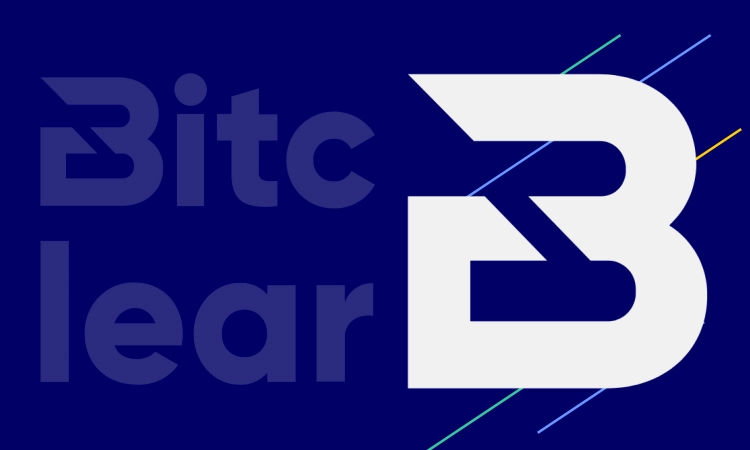Blockchain technology has quickly become a prominent part of the business realm. According to the research, 77% of global executives believe blockchain will be a disruptive force in their industry in the next five years. That’s because blockchain distributed ledger creates trust and streamlines payment processes, while also ensuring data immutability and decentralization.
However, the question remains – how to seamlessly integrate blockchain into the business while ensuring the software complies with all regulations and would benefit the business. We created this in-depth guide to describe the blockchain integration process with benefits and challenges organizations have to consider during the process.
 $26.91 billion
$26.91 billion
The global blockchain technology market size was calculated at $26.91 billion in 2024.
 51%
51%
The United States accounts for 51% of the global blockchain technology funding.
 $287.8 billion
$287.8 billion
The global enterprise blockchain market is forecast to reach $287.8 billion by 2032.
Benefits of Integrating Blockchain Technology into Enterprise Systems
-
Higher Data Security
One of the key blockchain integration benefits is its ability to track user data and monitor changes. The technology uses digital signatures based on public-key cryptography, where the owner holds a private key, ensuring that access is always verified and authorized. Organizations integrating blockchain have reportedly boosted customer loyalty and revenue thanks to enhanced data integrity and safety.
Blockchain can also validate transactions and create immutable and accurate records of data. Therefore, any changes made to the registry, data records, and contracts can be easily viewed by any authorized party and can be traceable. This is especially vital for businesses managing ERP systems, since data loss or untraceable records can cause financial losses and reporting issues.
Integrating blockchain-powered ERP systems allows companies to identify unauthorized access attempts and cybersecurity threats in real time. Blockchain technology resolves this issue through encryption, validation, and decentralization. Since all records are stored in a distributed network rather than a central location, it is almost impossible to hack the system.
-
Smart Contracts
Smart contracts refer to blockchain-encoded protocols that organize automated processes occurring on the blockchain. The smart contract is a code that self-executes when a specific set of rules is met.
Think of automatic card payments – users don’t need to log in to websites or confirm each transaction. Smart contracts work similarly, automating transactions that are triggered as soon as predefined rules are met. This makes business processes twice as fast and far more efficient.
The real advantage of smart contracts is their ability to automate time-consuming manual processes. For example, your company can streamline shipment initiation. Once payment is received, the smart contract automatically records the transaction on the ledger and closes it – no manual intervention required.
-
Reducing Payment Risk
One of the key benefits of blockchain is that it ensures the security of payments, which is why it is globally used in financial transactions. Payments on the blockchain are risk-free because every transaction is encrypted, verified, and permanently recorded on the blockchain ledger.
Blockchain streamlines payments offering a peer-to-peer transaction platform facilitating the exchange of money in a completely safe and transparent environment. This eliminates third-party involvement, making it harder for hackers to penetrate this environment and steal money or intercept payment data. Blockchain’s decentralized nature also enhances payment protection, ensuring safe and automatic execution of B2B transactions.
-
Identity Verification
The blockchain’s ability to verify identity is one of the key blockchain applications, especially in FinTech, insurance, and financial claims processing. Clients’ identity verification is a mandatory part of the financial process, and blockchain can significantly speed up and streamline the process.
With blockchain, client identities are verified through encrypted, immutable records, eliminating the need for manual verification. This speeds up onboarding processes, reduces fraud risk, and ensures regulatory compliance for industries that rely on Know Your Customer (KYC) protocols.
-
Transparency and Clear Reporting
As we already mentioned, blockchain offers transparency and clear reporting, essential for modern business operations. That is why it changed the rules of how companies and their subsidiaries perform intercompany transfers. Studies show that almost 50% of companies plan to use blockchain technology as their key intercompany transaction management system, also boosting the transparency of supply chain management.
With blockchain, all parties in a transaction have access to the same set of immutable records. This reduces disputes, speeds up the reconciliation process, and ensures accurate reporting. Companies that rely on supply chain tracking, internal audits, and compliance processes can greatly benefit from blockchain’s transparency and traceability.
-
Reduced Operating Costs
Integrating blockchain into enterprise systems can significantly reduce operational costs in many ways. Automation of manual tasks through smart contracts helps companies eliminate the need for intermediaries, reduce administrative burdens, and lower labor costs. Processes like payment verifications, approvals, and data reconciliations that would typically require human intervention are now fully automated.
Additionally, blockchain’s ability to provide real-time data verification and tracking reduces audit costs and shortens reconciliation timelines. Businesses can operate more efficiently with fewer delays, saving time and money.
-
Improved Speed of Operations
Traditional processes like payments, approvals, and data reconciliations can take hours or even days to complete. With blockchain, these processes are instantaneous. Smart contracts automate tasks, enabling immediate execution once certain conditions are met.
For example, supply chain operations that once required multiple manual verifications can now be completed in minutes, thanks to blockchain’s automated, rules-based system. In this way, blockchain elevates customer experience, improves business agility, and accelerates product delivery timelines.

Challenges of Integrating Blockchain into Enterprise Systems
-
Lack of Adoption
Blockchain distributed ledger works most effectively when adopted within a wide network of users, including suppliers, customers, and multiple stakeholders. However, the level of participation remains limited. Studies show that only 29% of companies are experimenting with or actively using blockchain. Without widespread adoption, the potential benefits of blockchain can’t be fully realized, especially in industries that rely on multi-party secure collaboration.
-
Rising Cost of Blockchain Implementation
Blockchain isn’t a cheap and easily accessible solution for organizations. Although most solutions available today are open source, companies face high expenses when hiring freelancers or outsourcing the work to blockchain development teams.
Additionally, some enterprise blockchain platforms charge licensing fees for advanced features or support. Besides development costs, there are ongoing administrative costs related to infrastructure, maintenance, and security. For companies with limited budgets, these expenses can be a major barrier to entry, especially when scaling the system to handle larger, more complex processes.
-
Scalability
Scalability is also a big concern for blockchain networks. While traditional payment networks can handle thousands of transactions per second without issues, Bitcoin can process only 3-7 transactions per second and Ethereum manages 15-20 transactions. Limited capacity results in slower processing times and higher transaction fees during periods of high demand.
This makes blockchain unsuitable for large-scale and high-volume applications. Emerging blockchain protocols aim to solve this issue, but many enterprises are still cautious about choosing a technology with scalability issues.
-
Regulations
Although blockchain is known for its decentralization and reduced need in an intermediate party, the lack of regulations in this domain is the next area where businesses may face difficulties. Different countries have different (and sometimes conflicting) regulations and limitations regarding blockchain usage, cryptocurrency, and data privacy. Without clear and unified legal frameworks, businesses risk non-compliance and fines.
For different industries like finance and healthcare, which are subject to stringent regulatory oversight, legal uncertainty poses a significant hurdle to blockchain adoption. It may also cause market manipulation and scammers, triggering a global economic collapse.
-
Interoperability
Most blockchain ledgers operate in isolation, so they have limited ability to communicate and share data with other blockchains or legacy systems. The lack of interoperability is a major concern for companies aiming to integrate blockchain with existing enterprise systems, like ERP or CRM platforms.
Without seamless data transactions, businesses face inefficiencies and operational bottlenecks. Efforts to create “cross-chain bridges” and interoperability protocols are underway, but progress is slow. As a result, companies must either wait for blockchain solutions to mature or invest in costly custom integrations.
Our blockchain experts will help you navigate the challenges of blockchain implementation.
Get in touch
7 Steps for Successful Integration of Blockchain into Enterprise Systems
-
1 Step 1: Identify the Use Case
The first step in blockchain implementation is identifying the specific business needs it will address. Determine what problems you want to solve by implementing the technology and assess whether the investment is justified. Begin with a pilot project to evaluate feasibility and analyze the results before scaling across the company. Key questions to ask at this stage include:
- How will blockchain improve your business model and operations?
- What will be the key purpose of blockchain within your organization?
- How will blockchain implementation reduce costs or improve customer service?
- Do you have a 3-5 year plan for blockchain adoption?
This initial assessment ensures the project is aligned with your strategic business goals and minimizes the risk of unnecessary investment.
-
2 Step 2: Assess Infrastructure Readiness, Budget, and Goals
Before diving into blockchain implementation, it’s paramount to identify current bottlenecks, determine where blockchain can add value in your company, and ensure the existing infrastructure can support the seamless integration.
- Infrastructure Readiness: Evaluate the compatibility of the current system with blockchain. Check for scalability, storage capacity, and integration capabilities with ERP, CRM, supply chain systems, etc.
- Bottleneck Identification: Notice inefficiencies and issues in existing workflows that blockchain can improve, such as security vulnerabilities, manual data reconciliation, or third-party reliance.
- Budget and ROI: Calculate the cost of blockchain development, infrastructure updates, and staffing. Assess the potential return on investment (ROI) to justify the project. Set clear goals for cost reduction, speed, and operational efficiency.
This stage makes the transition to blockchain smoother and helps mitigate risks connected with technical compatibility and feasibility.
-
3 Step 3: Select the Consensus Mechanism
The consensus mechanism is the core algorithm that validates transactions and adds new components – blocks – to the chain. It ensures agreement among nodes, enabling secure and accurate transaction recording. Selecting the right consensus mechanism is essential, as each has unique benefits and trade-offs.
Popular consensus mechanisms include:
- Proof of Work (PoW): Highly secure but energy-intensive and slow. Used in Bitcoin.
- Proof of Stake (PoS): More energy-efficient and faster than PoW but requires participants to hold a stake.
- Proof of Authority (PoA): Suitable for private blockchains with trusted validators but offers less decentralization.
- Delegated Proof of Stake (DPoS): Faster and more efficient but requires voting for trusted delegates.
There’s no perfect consensus mechanism. You need to choose the mechanism based on your business needs, such as security, speed, energy consumption, and scalability. For example, supply chain platforms may prioritize speed (PoS), while financial applications may focus on security (PoW or PoS).
-
4 Step 4: Select Your Blockchain Platform and Tech Stack
The next step is choosing the platform based on the identified consensus mechanism. It is best to conduct research in the previous step to find out what platforms are suitable for your preferred algorithms. Considering the number of blockchain options you can use today, this critical step may be time-consuming and more challenging than most expect.
Choosing the right blockchain platform is a meticulous decision making process that shapes the entire development process. The most popular platforms are:
- Ethereum: Highly flexible, supports smart contracts, and is widely used. However, it may have high gas fees and slower transaction speeds.
- Hyperledger: Ideal for private, permissioned networks where security, privacy, and enterprise-grade scalability are priorities. It is best for industries like supply chain, healthcare, and the finance sector.
- Corda: Specializes in financial services and allows secure, direct, peer-to-peer data sharing. However, it may lack the versatility of other platforms.
Selecting the right blockchain platform requires careful consideration, as it significantly impacts the project’s success and scalability. Pay attention to the following key factors:
- Business Needs: Identify the primary objective of blockchain adoption (e.g., supply chain tracking, payment security, or smart contracts).
- Consensus Mechanism Compatibility: Ensure the platform supports your chosen consensus mechanism.
- Scalability and Transaction Speed: For high-volume transactions, consider platforms with high-speed processing (like Corda or PoS-based Ethereum).
- Privacy Requirements: Across multiple industries like healthcare or finance, a private, permissioned blockchain like Hyperledger may be more suitable.
Once you’ve chosen a platform, select a compatible tech stack. This includes frameworks, tools, and programming languages like Solidity (Ethereum) or Go (Hyperledger). Building on a well-matched platform and tech stack ensures smoother development and fewer compatibility issues later on.
-
5 Step 5: Build Proof of Concept (PoC)
After the technology stack has been confirmed, it’s time to chart out a developmental strategy. A Proof of Concept (PoC) validates your blockchain idea and demonstrates its viability before full-scale implementation. This step helps you identify many potential obstacles and refine processes before launching a production-ready system.
The PoC stage typically includes:
- Conceptualization: Define the use case and success criteria.
- Development: Build a minimal functional version of the blockchain system.
- Testing: Identify unforeseen issues, security risks, and integration challenges.
The insights gained from a PoC can help you secure stakeholder support, showcase value to clients, and refine the project roadmap before large-scale deployment.
-
6 Step 6: Research Legal and Regulatory Requirements
Before implementing blockchain, you need to ensure compliance with local, national, and industry-specific regulations. Since blockchain is still an emerging technology, regulations vary by country and industry. This step is crucial for sectors like healthcare and finance, where data privacy and compliance (e.g., HIPAA, GDPR) are critical.
Key regulatory considerations include:
- Data Privacy Laws: Check if decentralized data storage complies with GDPR, HIPAA, or similar privacy regulations.
- Licensing and Tax Implications: Ensure you understand blockchain-related tax policies, especially for crypto-based transactions.
- Regulatory Adaptations: Stay updated on changes in blockchain regulations as the legal landscape evolves.
By addressing these factors, you can avoid potential fines, maintain compliance, and ensure smooth adoption of blockchain technology.
-
7 Step 7: Hiring Staff
Once you’ve mapped out your strategy, platform, and technical requirements, it’s time to hire specialists to help you realize the project. Recruiting the right team plays a crucial role that will make a difference in the long run. Blockchain development requires highly specialized skills, so you need to explore several hiring options available today:
- In-House Team: Best for long-term blockchain projects but can be costly.
- Freelancers: Cost-effective for small tasks but may lack reliability for large projects.
- Outsourcing: Offers access to global talent and cost savings but requires careful vendor selection.
- Staff Augmentation: Provides the flexibility to scale up your team with experienced blockchain developers when needed.
When selecting your team, explore how the company operates, whether it has successful blockchain implementation cases or not, what tech stack the team offers, and how it resonates with your business needs. Choose a cost-effective yet quality option checking the associated costs and backgrounds of the specialists.
Examples of Successful Blockchain Integration into Enterprise Systems
Solstice
Solstice is a platform used by therapeutic organizations (pharmaceutical companies, biotechs, etc.) to collect and manage patient data, like genome analyses, X-ray pictures, health records, etc. Given the critical need for data security and privacy, Interexy implemented a blockchain-powered data management system to ensure end-to-end encryption and decentralized storage. This allowed sensitive health data to be encrypted and stored as immutable, tamper-proof records.
Our team played a paramount role in creating a system where patients control consent and access to their health data. Blockchain implementation allowed medical organizations to access comprehensive, longitudinal health records. This improved data security and accelerated the innovation process for our clients in the healthcare sector, supporting faster research and development.

NFT Ticketing
With the rise of the Metaverse, brands, celebrities, and users seek for transparent, secure, and fast access to virtual events. To meet this need, Interexy developed NFT Ticketing, a blockchain-based web platform allowing users to buy tickets to Metaverse concerts in the form of non-fungible tokens (NFTs). Blockchain makes the process seamless and secure, allowing users to store their tickets in their wallets.
Our team designed and implemented a system where tickets are minted as NFTs and stored securely in users’ crypto wallets. We ensured the use of a robust smart contract framework to automate ticket issuance and verification, eliminating the risk of fraud or counterfeiting. The blockchain’s decentralization feature allowed for transparent and trackable transactions, giving users full ownership and control over their tickets. Blockchain implementation enhanced user experience and improved security, making our client’s platform a reliable entry point into the Metaverse event space.
How Can Interexy Help?
Interexy is on the list of Top Blockchain Development Companies in London, Miami, and Dubai, according to Clutch. We are known as trusted staff augmentation and outsourcing blockchain partners with the largest staff of blockchain developers on the market.
We offer blockchain app development services, from consulting to developing complex blockchain-based solutions. As experts in smart contracts, NFT launches, and blockchain-based mHealth solutions, we can help you through the entire development lifecycle.
You can outsource the entire process to our team, hire professionals to expand your in-house team and perform specific tasks or get the entire dedicated team of blockchain developers on board within 10 business days.
Book a quick call with our experts to learn how your business can benefit from blockchain implementation.
Let's talkFinal Thoughts
Organizations spend millions on improving their business, yet not all solutions deliver the expected results. While blockchain may not be the right fit for every company, when properly implemented, it offers significant benefits such as enhanced transparency, faster operations, and reduced costs. These advantages can give businesses a competitive edge and open new opportunities, enabling them to stay ahead in a rapidly evolving market and achieve increased efficiency and success.
FAQs
-
What is blockchain integration?
Blockchain integration involves incorporating blockchain technology into a company’s existing systems or processes. It enables secure and transparent data sharing, automates workflows with smart contracts, and enhances operations tracking. The process includes connecting blockchain platforms (like Ethereum or Hyperledger fabric) with legacy systems while ensuring interoperability, increased security, and regulatory compliance.
-
What are some potential benefits of integrating blockchain technology into enterprise systems?
Integrating blockchain into enterprise systems enhances security, transparency, system efficiency, and performance. By leveraging encryption, public-key cryptography, and decentralized storage, businesses can protect sensitive data and detect unauthorized access in real time.
Blockchain’s distributed ledger technology ensures transparent tracking of transactions and data changes, supporting supply chain visibility, financial reporting, and regulatory compliance. It also reduces operating costs by automating manual processes with smart contracts, eliminating intermediaries, and accelerating work flows like payments and shipment tracking.
Additionally, blockchain strengthens payment security, enabling encrypted, risk-free peer-to-peer transactions, and streamlines identity authentication, simplifying KYC processes in industries like FinTech, banking, and insurance.
-
What are some challenges that different companies may face when integrating blockchain into legacy systems?
Integrating blockchain into legacy systems presents challenges like interoperability, as legacy systems aren’t designed to communicate with blockchain networks, which often require costly custom integrations.
Another issue is scalability, with blockchains like Bitcoin and Ethereum processing far fewer transactions per second than traditional systems. Companies also face high implementation costs for development, licensing, and infrastructure.
Regulatory uncertainty adds complexity, especially in industries with strict compliance requirements, while limited adoption by partners and third parties can hinder blockchain’s full potential.
-
How much does it cost to integrate blockchain?
The cost of integrating blockchain varies depending on the project’s scope, complexity, and the type of blockchain solution you choose. While open-source platforms like Ethereum are free to use, companies still face significant expenses for development, customization, and integration with existing systems.
Hiring experienced blockchain developers or outsourcing to a development team can add to the cost, along with potential licensing fees for enterprise-grade platforms. Businesses must also budget for infrastructure upgrades, ongoing maintenance, and security measures.
Overall, the total cost can range from tens of thousands to hundreds of thousands of dollars, depending on business needs and project size.
-
How to integrate blockchain into your business?
To integrate blockchain into your business, identify the use case by pinpointing the problems it will solve.
Next, choose the right platform (like Ethereum or Hyperledger) based on your needs for security, scalability, and transparency. Assess infrastructure readiness to ensure your systems can support blockchain. Develop a Proof of Concept (PoC) to test whether it’s feasible and address challenges early. Finally, ensure regulatory compliance and hire skilled blockchain experts to oversee development, integration, and ongoing support.
This approach helps reduce risks, control costs, and ensure a smooth transition.






